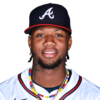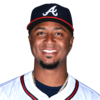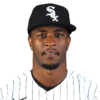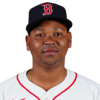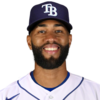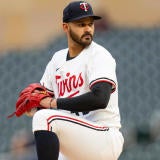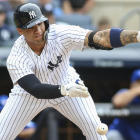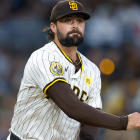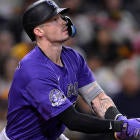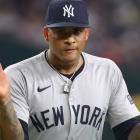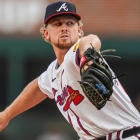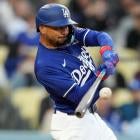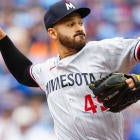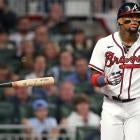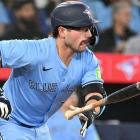Want to get a jump on the competition? Go to the CBS Sports app on your phone, open up "Settings" and sign up for Fantasy alerts to get the latest from our Fantasy baseball team as soon as it's available.
There's where a player goes and where he should go.
Suffice it to say it's not always the same.
When the former is later than the latter, hey, you've found a bargain. You can check out my 12 underrated for some of those.
But when the opposite is true and a player goes earlier than his expected production warrants, well, you don't need me to tell you it's a bad thing.
What you do need me to do is point out such instances so you know to, you know, steer clear.
I have 12 here, each identified using FantasyPros consensus ADP for Rotisserie leagues. There comes a point when I'd be willing to draft any of them -- and I've included my own ranking as a basis for comparison -- but based on what the early draft data shows, I don't expect to have many shares.
There may come a point when Ronald Acuna is indeed deserving of a first-round pick, but why rush it? More than anything else with your first-round pick, you don't want to mess it up, and grabbing a 21-year-old with two-thirds of a big-league season under his belt seems like too much of an invitation to do that.
It's not that I think he'll be bad -- the downside is probably something on the level of Justin Upton. It's just that drafting him so early makes a couple of assumptions: first, that his numbers from the second half are something he can continue, and second, that he's going to be a significant contributor in stolen bases. Or at least either/or.
The Braves philosophically have never been much for sending middle-of-the-order bats, which Acuna will be if manager Brian Snitker has his way and puts Ender Inciarte back in the leadoff spot. Of Acuna's 16 steals last year (an underwhelming total in its own right), 14 came in the leadoff spot, which comprised something like two-thirds of his plate appearances. Counting on him for more than 20 or so steals seems like a mistake. As for those second-half numbers, they depended on him having a .367 BABIP and a home run-to-fly ball rate that would have ranked fourth in all of baseball. Maybe he really is that much of an outlier, but with just a couple months' time backing it up, I wouldn't count on it.
Even in scenarios where the underlying numbers add up to something completely sustainable, sometimes sophomores just slump. The word gets out, scouting reports improve or maybe the players themselves become a little complacent. When the alternative is can't-miss, as is the case for most every other first-rounder, why take the chance of missing?
As with Acuna, a path to MVP-caliber numbers exists for Javier Baez, as he showed last year. It's just too much of a tight-rope walk for me to take the plunge in Round 2. Baez is an example of a player who indeed managed to sustain an outlier BABIP and home run-to-fly ball rate for a full season, the former ranking 16th among qualifiers and the latter ranking eighth. It's just that his plate discipline is so poor he kind of needs to rank that high to keep from hitting a hollow .250 with 25 homers, a la Wil Myers.
It's that sort of floor that keeps me from fully buying into Baez's ceiling. He came closer to that bad end in 2017, when he still had a freakish .345 BABIP, so even by his own standards, last year was an outlier. That's not to say I see him totally bottoming out. He projects for some stolen bases, which is nice, and would seem to have good job security. I just think it's appropriate to safeguard against the worst by dropping him around lower than the numbers say he should go.
We already know that the best-case scenario for Cody Bellinger -- the one that comes closer to a league-leading than league-average home run-to-fly ball rate -- is deserving of a fourth-round ADP, because that one is liable to hit 40 home runs with a respectable batting average. But we also already know that the best-case scenario isn't the only scenario, and the one that has him topping out at 25 homers, like last year, is a bit too plausible to ignore.
True, he hits the ball hard. He elevates it well. He pulls it often. The basic profile would suggest his 2018 was closer to his floor than his most-likely scenario. It's why I'm not ranking him according to those numbers, which would put him more in the 85-90 range around Justin Upton and Travis Shaw. But splitting the difference seems like the most prudent course of action, especially after Bellinger burned so many last year.
If we assess his numbers at face value, Ozzie Albies' going rate isn't so bad. He was the seventh-best second baseman in Head-to-Head points per game last year, after all But it doesn't take a brain surgeon to recognize that the full-season line may not be so applicable in his case. As a fresh-faced full-timer last year, he hit 13 home runs in his first 40 games. Over his final 118, he hit 11.
That second version of Albies would have ranked only 20th in Head-to-Head points per game, behind Joey Wendle and Asdrubal Cabrera. No way you can take that guy 48th overall.
I understand the cited ADP is for Rotisserie leagues, where Albies might rate a little higher since he offers some small help in stolen bases, but the point is he's not a stud and far from a sure thing. He sold out so much for power over the final 4 1/2 months, pulling everything with weak contact, that he didn't profile for a great batting average despite a low strikeout rate. The underlying numbers say he's exactly the player he was, which is to say not good enough.
All things considered, I feel like my ranking is pretty optimistic. Making contact is an important skill in today's MLB, and the kind of numbers he put up don't have much precedent among 21-year-old second basemen. But drafting him in the same range as Xander Bogaerts and J.T. Realmuto is just foolhardy.
Gleyber Torres had a fine rookie showing, smacking 24 homers in about three-quarters of a season. Turns out, though, that in today's power-laden environment, it takes a little more to stand out, even as a middle infielder. His batted-ball profile was virtually identical to Paul DeJong's -- the same Paul DeJong going 191st overall -- and it turns out they averaged about the same number of Head-to-Head points per game, too, outclassed by Eduardo Escobar and Jorge Polanco.
I'll be the first to admit it's reasonable to draft Torres ahead of any of those three. He was an elite prospect for years leading up to his debut, and the most questionable of his attributes, the power hitting, is the one that manifested right away. But taking him 52nd overall is asking a huge leap in his second season, and it's unnecessary given what else is available at both of the positions where he's eligible. Yeah, I'm counting second base. Scooter Gennett is going 29 spots later, for crying out loud.
Full disclosure: I'm a Braves fan, so I naturally want Ronald Acuna and Ozzie Albies to be their best possible selves this season. But it looks like Mike Foltynewicz already was last season. The fourth-year starter known mostly for his ability to push triple digits on the radar gun appeared to take an ace turn last year, judging by both the strikeout rate (9.9 per nine innings) and ERA (2.85). And his 3.37 FIP, 14th-best among qualifiers, would seem to validate it.
But see, FIP is only as reliable as the numbers feeding into it, and Foltynewicz's don't add up. Just at face value, the 3.3 walks per nine innings are a detriment, so let's set them aside. His 9.9 K/9, 13th-best among qualifiers, becomes harder to believe when you factor in a disproportionate rise in swinging-strike rate that still ranked only 54th among qualifiers. Likewise, having the 12th-lowest home run rate seems like a stroke of good fortune for the pitcher with the 16th-highest fly-ball rate. And did I mention he had the fourth-lowest BABIP?
Good luck, good luck and more good luck. If you want upside, go with German Marquez instead. If you want security, go with Miles Mikolas instead. Seems like Foltynewicz might fall short in both.
Josh Hader's 143 strikeouts last year were 19 more than any other full-time reliever and meant he could compete with some actual starting pitchers, namely the Kevin Gausman/Tanner Roark crowd, in the category. Getting surefire ERA and WHIP help without sacrificing too much in that area is nice, no doubt.
But it's a question of how nice. Most every closer is helping in ERA and WHIP, too, and they're doing it in addition to providing saves, a critical category that only a select few arms can fill. Hader can only compete with the bottom of the starting pitcher crop in strikeouts, so you're still taking a hit with him, albeit a smaller one. Committing to a poor strikeout total from one of your nine pitcher spots without also securing a large number of saves feels like a missed opportunity, particularly at a stage in the draft where confirmed closers like Jose Leclerc, Kirby Yates and Wade Davis are nearing depletion.
Dedicated closers are becoming scarcer, so while there's more of an opportunity than ever for someone like Hader, who will at least contribute a handful of saves, to matter in Fantasy, it can't come at the expense of security in a scarce category. Once those dedicated closers are off the board, have at him.
Tim Anderson was one of just 10 players to contribute at least 20 homers and 20 steals last year, and the opportunity to secure some of the latter without sacrificing much of the former is a big draw these days. But he's such a detriment to everything else that it hardly seems worth the trouble.
Just look at some of the middle infielders you'd be passing up by taking Anderson 124th overall. Robinson Cano should excel at four categories batting in the heart of the Mets' lineups. He's not the power source he once was, but he's not any worse than Anderson and has the sort of plate discipline that should better his other totals rather than pushing him down the lineup. Jurickson Profar flashes 20-20 potential himself, is also on the opposite end of the spectrum in terms of plate discipline and actually has some room to improve after getting burned by BABIP last year. Shoot, Brian Dozier, who was going in the second round at this time a year ago and didn't lose as much as you might think judging by the batted ball profile, is getting drafted two rounds after Anderson.
Anderson's .687 OPS last year was 126th among the 142 qualifying hitters, for crying out loud, so we're talking a desperate grab for steals here — and not even enough to carry you in the category. Why not take Billy Hamilton if you're that hard up? He's going 153rd.
At 22, Rafael Devers is another example of a player with all the tools and pedigree to break through in a big way. But based on what he did as a sophomore last season, it's a complete leap of faith in Fantasy. There are times for those, of course -- the late rounds would be perfect -- but his FantasyPros ADP translates to Round 11 in a 12-team league, which is where you should still be drafting integral parts of your lineup, such as a third outfielder, fourth starting pitcher or second closer.
Maybe at a position of desperation, you could justify a Hail Mary here, but third base is clearly the deepest position heading into 2019. Devers is the 19th off the board at this point. How many does every team need?
And again, we're talking a leap of faith here. Devers was a .240 hitter with poor plate discipline and moderate power a year ago, and the batted-ball profile made him out to be exactly that.
While the league as a whole has gotten better at missing bats over the past few years, Kyle Hendricks himself has gotten worse, ranking 47th among the 58 qualifying pitchers in K/9 last year. His plus control and ground-ball tendencies still give him a respectable enough ERA, but even that's dicey given that he has greatly outperformed his FIP three years running.
You know who has greatly underperformed his FIP while consistently ranking among the league leaders in strikeouts? Chris Archer, who we all targeted like he was a Fantasy ace at this time a year ago. On average, Hendricks is going two picks ahead of him now.
Look, if you really want your innings to be as safe and as boring as possible, Rick Porcello has proven to be a superior strikeout pitcher and has an offense that should put him in a better position for wins. His situation predisposes him to a higher ERA, sure, but the WHIP is similar because his control is so good. It feels like he has the more to offer than Hendricks, and yet he's going 27 picks later.
If there's a litmus test for having a blind allegiance to pedigree and upside, Nomar Mazara is it. For the third straight year now, he's getting drafted among players more productive than him in the hope that somewhere in there is another level of production. And given that he'll only be 24 in April, there may well be.
But why does he deserve the benefit of the doubt still? For three straight years now, he has offered exactly the same: a .260 batting average with 20 home runs. He doesn't walk enough to score many runs, his career high sitting at 64, and apart from a fluky 101-RBI 2017, he's not driving in many either. You could make the case he's below-average in all five categories.
Ah, but the breakthrough is coming! Based on what? He doesn't elevate the ball like a power hitter and took another step toward the other extreme last year, ranking sixth in ground-ball rate alongside Dee Gordon and Jon Jay. Maybe he alters his swing at some point, but we're just wildly guessing as to what's going to transform him in 2019. The 140th pick seems too early for that.
Here we are desperately seeking steals again. Just what's the extent of our obsession? Well, we'll turn to a guy with only a 68.5 percent success rate last year because he happened to up his pace in the second half. It's true that Amed Rosario was more aggressive (and successful) after the Mets moved him to the leadoff spot in late July. It's also true that they'd be crazy to keep batting him leadoff given the pieces they've added to their lineup this offseason.
He's not a good hitter, you see. It's another one of those situations where he's young enough with a strong enough pedigree that he could still become one, but any evidence of him being on the verge of it is scant at best. He upped his line-drive rate over the final two months and hit .284, which was great, but with only a .318 on-base percentage. Yeah, he belongs in the eight hole, where his contributions at a deep position will amount to next to nothing, at least from a mixed-league perspective.







